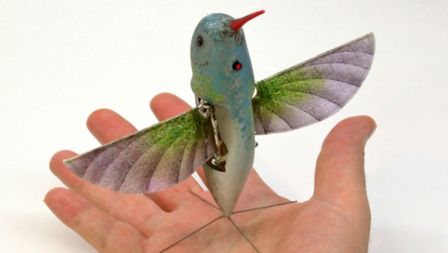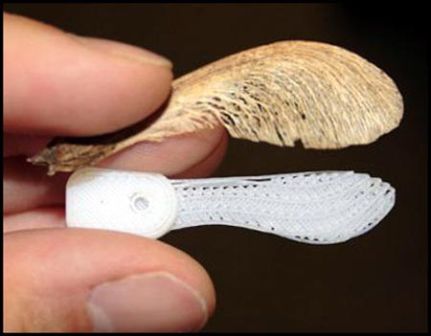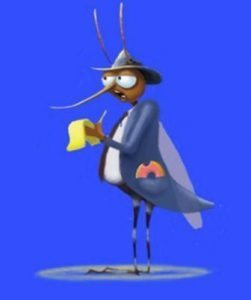Planting Bugs Inside Bugs: Now That’s Sneaky!
The pentagon has gotten serious about the spy game. And it looks like the goofy glasses and fake mustaches may be on their way out.
Yep, shoe phones and the cone of silence may also soon be a thing of the past. So move over Maxwell Smart and Agent 99. Step aside Spy v. Spy. James Bond, open the window for…The Hummingbird.
Weighing less than a AA battery, this tiny spy drone is capable of flying in all directions, rotate, and climb and descend. And the best part is that it can do all that while a miniature camera records all it “sees.” Oh, I guess I should mention that the hummingbird’s flight is propelled solely by flapping it’s wings.
A California company, AeroVironment, developed the “bird” at a cost of $4 million over a period of 5 years. But it’s not their first attempt at creating this sort of thing. Not at all. They’ve also developed a flying reptile that’s been around for a while now.
And then there’s that whirling maple leaf seed (the whirly bird) developed by Lockheed Martin. At .07 ounces, this tiny spy plane is packed full of imaging and navigation equipment.
And it doesn’t stop there. The US government’s research group, Defense Advanced Research Projects Agency ( DARPA) has plans to implant live insects with video cameras or sensors during their metamorphosis stage and then control them by applying electrical stimulation to their wings. Now that’s a bug!
I guess it’s just a matter of time before insects begin to play a vital role in law enforcement intelligence gathering…








I’m with you, Jonathan. I’d like to add one to my Christmas wish list. What a cool toy.
That’s cool, but they’re going to have a problem if they try to get the hummingbird to blend in (at least, beyond the fact that it has an antenna sticking out of its tail).
Hummingbirds are extremely territorial. If they try to do surveillance with this thing somewhere that’s frequented by real hummingbirds, the drone will be attacked and knocked from the skies.
They’re welcome to bring one to my place this spring for testing. Just leave the bird and the remote, and I’ll report back in a year or so…
Well this may now require new explanations to your kids about the birds and the bees !